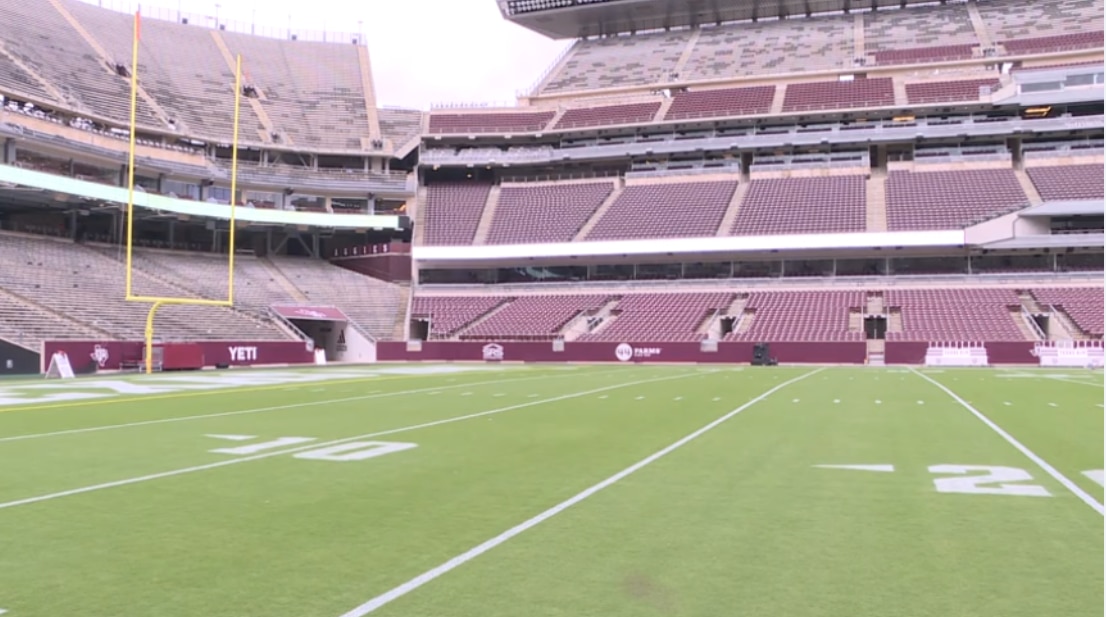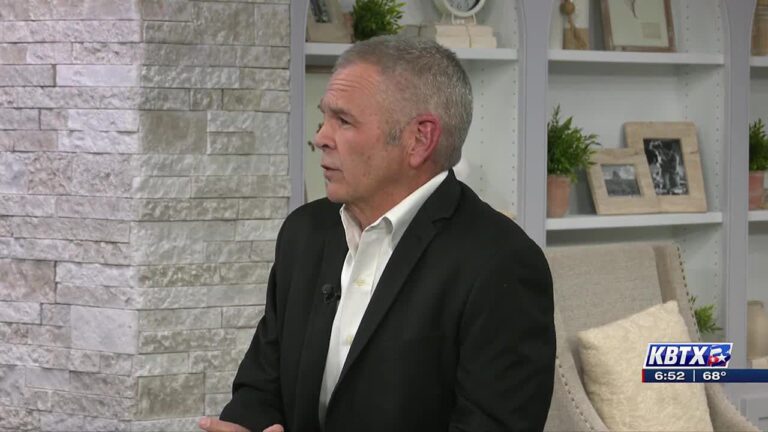The science underneath Kyle Field
BRYAN, Texas (KBTX) – A lot goes into the care and keeping of Kyle Field, and Nick McKenna oversees it all.
Nick McKenna is one of only 300 Certified Sports Field Managers in the country, and fortunately for Texas A&M Athletics, he also serves as their Assistant Director of Sports Fields. From Kyle Field and Blue Bell Park, to Ellis Field and Davis Diamond, McKenna is tasked with the maintenance of all grass and turf sports surfaces at A&M. He works alongside 12 other full-time Sports Surface Directors, as well as many student workers, to ensure all outdoor athletic surfaces are well taken care of.
The maintenance of a collegiate sports surface is more than meets the eye. In fact, every inch of Kyle Field is scientifically engineered to produce the state-of-the-art Bermuda grass that covers the 74,000 square foot field. In order to understand the complexities involved in growing a college football field, you must first consider what is under the field.
Since Kyle Field’s renovation in 2015, AirField’s AirDrain Agronomic Natural Turf Drain System has played a vital role in the upkeep of the field, especially from a meteorological standpoint. According to McKenna, “Kyle Field was designed from the ground up with significant weather in mind…so that whether it rains three inches, or it doesn’t rain for three weeks, we have the ability to control and manipulate those factors”. One of the ways those factors can be controlled is through the use of sand, but not just any sand. The 11 inch sand profile that lies beneath every blade of grass on the field was scientifically researched to ensure that elements such as particle size and sphericity were optimized, allowing for maximum water drainage or retention, depending on the weather. This sand works in combination with materials like filter fabrics and plastic drainage rings to boost plant available water storage, reduce daily irrigation needs, and to create an overall healthier natural turf surface for athletes to play on.
College Station picked up over two inches of rain on the Thursday morning prior to hosting the Crimson Tide, but thanks to the science underneath Kyle Field, that was of no concern to Nick McKenna and his team. Kyle Field is designed to take on multiple inches of rain per hour without getting water-logged, and when asked how much rain would be too much rain for Kyle Field, McKenna said, “I haven’t found that out yet, and I hope I never do to be honest”.
What is more obvious to the untrained eye is the cosmetic upkeep of the field. The field is mowed seven times a week, frequently watered and reseeded, and receives a fresh coat of paint before every home game. Though the outward appearance is obviously important, according to Nick McKenna, it is what is on the inside that counts; that is, the drainage system of course.







